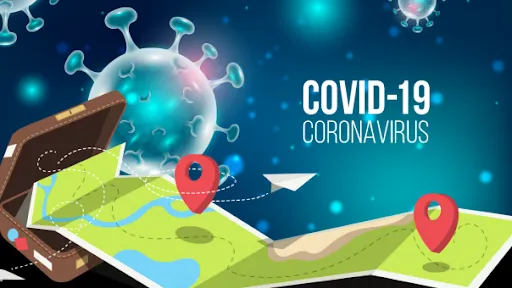
This is the molecular mechanism by which a virus can cause diabetes
CNIO researchers have discovered how Coxsackievirus type 4B affects the functions and identity of beta cells that generate insulin in the pancreas, causing the appearance of diabetes.The finding could be relevant in the Covid-19 pandemic, since recent works indicate that SARS-COV-2 could also cause this disease in some patients.
Infection by some enterovirus - virus gender that commonly causes diseases of diverse gravity - could activate the appearance of diabetes, despite the fact that their direct effect in vivo and its mechanism of molecular action are unknown.
Now, a group of growth factors, nutrients and cancer, which leads Nabil Djouder at the National Oncological Research Center (CNIO), demonstrates for the first time how the enterovirus coxsackievirus type B4 (CVB4) could induce diabetes.The finding, published in Cell Reports Medicine, would constitute a fundamental step to open the road to the search for new therapeutic strategies.
The authors also point out that the discovery could be relevant to face the Covid-19 pandemic, since clinical information indicates a possible relationship between SARS-COV-2 infection and diabetes."Since the receiver of this virus is expressed in the endocrine pancreas, it could operate and cause diabetes in a way similar to the CVB4, regardless of immune reaction," they suggest.
Coxsackievirus B belongs to the family of enterovirus;It was suspected that they could cause diabetes in humans, but the molecular mechanisms of this effect were unknown
insulin production failure
Coxsackievirus B belongs to the family of enterovirus, which also includes polyvirus and echovirus, and can cause slight diseases similar to flu to others of greater serious, such as myocarditis, pericarditis, meningitis or pancreatitis.It was suspected that these viruses can cause diabetes in humans, but the molecular mechanisms of this effect were unknown.
With the aim of finding and describing these systems, CNIO scientists worked with animal models grafted with human pancreatic cells infected with CVB4, as well as with both human and mouse -producing cells, also infected by this virus.
Thus, they observed that CVB4 infection causes the deregulation of URI, a protein that regulates the functioning of numerous cell activities."In this case, this deregulation triggers a waterfall of molecular events that lead to the modification of the genome by hypermethylation and silencing of PDX1," explains Djouder.
pdx1, a critical gene
"This is a critical gene for the identity and function of beta cells present in the endocrine pancreas, in the so -called Langerhans islets, responsible for the production and secretion of insulin, the hormone that reduces blood glucose levels"Add the expert.“The silence of PDX1 causes the loss of identity and function of beta cells, which move to alpha cells, which are in charge of increased blood glucose levels, which leads to hyperglycemia and diabetes regardless ofimmune response. ”
The researchers verified their findings through several genetically modified mouse models and genomic studies, showing that the loss of URI in the mouse pancreas alters the identity and function of beta cells and causes diabetes.In addition, they observed that diabetic mice that ox super -expresses in these cells are more glucose tolerant.
Finally, they also observed in pancreas from diabetic patients that the expression of URI, PDX1 and viral particles are correlated in beta cells,indicating a causal relationship between enterovirus infection and diabetes in humans.
applications in coronavirus
The results could help advance the knowledge about the pathological effects of the virus causing the current pandemic: “in the likeness of our research on enterovirus, some recent clinical observations have associated SARS-COV-2 to the appearance of diabetes in infected patients”, indicates Djouder.
The results could help advance knowledge about the pathological effects of the current pandemic virus
"Since the SARS-COV-2 receiver is present in beta cells, it would be interesting to study if this virus also alters the function of URI and silence the expression of PDX1 to affect the function of beta cells, promoting diabetes".
Researchers also suggest that a possible preventive and therapeutic strategy could be to use, in combination with antiviral therapies, DNA methyltransferase inhibitors, protein responsible for the hypermethylation of the genome and the silence of PDX1.
Moreover, the team has shown that this kind of inhibitors restores PDX1 expression and glucose tolerance in diabetic mice.Some of these inhibitors have already been licensed for clinical use in cancer treatments, which could accelerate their application in these cases.
Reference:
Hugo Bernard, Ana Teijeiro, Almudena Chaves-Pérez, Cristian Perna, Basanthi Satsh, Anna Novials, Jennifer P. Wang, Nabil Djouder, 'Coxsackievirus b Type 4 Infection in ß Cells Downregates The Chaperone Prefoldin Uri to induce a mody4-like viaPDX1 Silence '.Cell Reports Medicine, 2020. DOI: 10.1016/J.XCRM.2020.100125
The work has been funded by the Ministry of Science and Innovation, the Carlos III Health Institute, the European Foundation for the Study of Diabetes, the State Research Agency, the European Regional Development Fund and the US National Institutes of Health.UU.

11/26/2020 12:41 p.m.
@fer - Diabetes Tipo 1 desde 1.998 | FreeStyle Libre 3 | Ypsomed mylife YpsoPump + CamAPS FX | Sin complicaciones. Miembro del equipo de moderación del foro.
Co-Autor de Vivir con Diabetes: El poder de la comunidad online, parte de los ingresos se destinan a financiar el foro de diabetes y mantener la comunidad online activa.
Hopefully it advances in those treatments.
My daughter was detected that Coxsackie virus in the debut.

11/27/2020 4:57 a.m.
Hija de 35 años , diabética desde los 5. Glico: normalmente de 6 , pero 6,7 la última ( 6,2 marcaba el Free)
Fiasp: 4- 4- 3 Toujeo: 20
If I have understood this diabetes that generates the virus, it is not autoimmune.(He says he is independent of the immune response?)
Then it should not be the type1.

11/27/2020 12:34 p.m.
En 1922 descubrieron la insulina, en 1930 la insulina lenta. ¿Que c*** han hecho desde entonces?
Until now it was thought that all type1 were autoimmune, but they can discover more things if there are cases in which the attack on beta cells is caused by a virus ...
In the case of my daughter, the analytics gave the virus positive, but negative to antibodies.

11/27/2020 8:44 p.m.
Hija de 35 años , diabética desde los 5. Glico: normalmente de 6 , pero 6,7 la última ( 6,2 marcaba el Free)
Fiasp: 4- 4- 3 Toujeo: 20
If I have understood well, what does the virus do not generate an autoimmune response but to cause a change in the function of beta cells that would function as alpha that do the opposite not?
11/29/2020 11:09 a.m.
Incredible ... Look that in the end in many of us the happy diabetes has nothing to do with autoimmunity but simply with a viral infection.
It would not be the first time that scientific advances throw previous beliefs.
11/29/2020 3:47 p.m.
